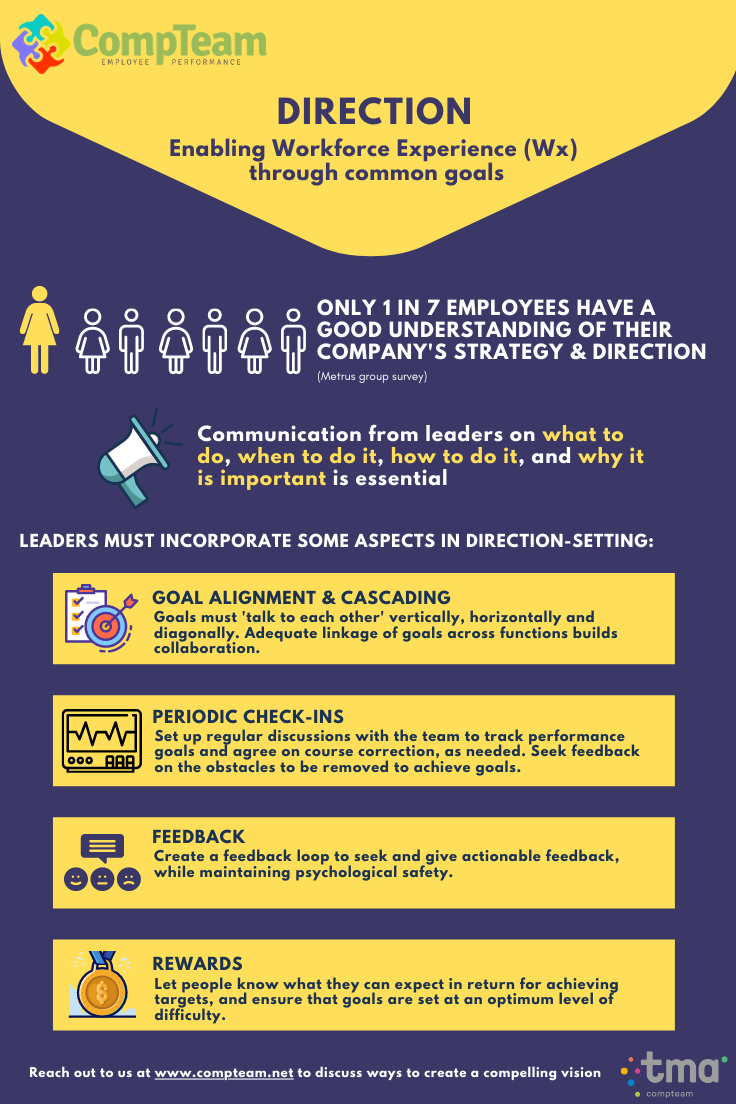Navigating in the Right Direction
“There is no favorable wind for the sailor who doesn’t know where to go” (Seneca, Ancient Roman philosopher)
So, your company has a vision statement – great! But you’re not getting results, you say? That’s hardly surprising. If people don’t seem to understand how to translate the vision into reality, or what is the direction the organization is heading in, you are not alone in facing this scenario.
As per a Metrus group survey, only 14% of employees have a good understanding of their company’s strategy and direction. It is the equivalent of 1 in 7 people on a rowing team actually knowing what direction to row in, to win the race. The biggest gap here is that leaders are usually clear on the strategy but fail to adequately communicate it to their people.
Cascading company goals is vital, and it is important for people to know how their individual roles and responsibilities help in aggregating to a larger, organization-wide goal. Even if a worker is assembling widgets for a living, knowing how their role impacts the overall results of the organization helps them stay motivated, engaged and productive.
1. Goal alignment and cascading: Organizations’ goals need to be cascaded not only vertically but also horizontally and diagonally. For example, if the organization intends to increase profits by 15% over a year, the role of the Sales leader could be to ensure 20% higher sales numbers. However, the Sales leader will be able to achieve this only if other CXOs are aligned and have their own ‘skin in the game’. For example, does the CHRO (or his team) have a corresponding target to pump up the hiring engine? Or to conduct more training programs to skill up people? Similarly, what will be the associated targets for the Sourcing leader and the Manufacturing Head?
2. Periodic check-ins: Ensure that you set up regular discussions to keep track of performance goals and identify course-correction measures. Collect feedback on what obstacles need to be removed for people to be able to deliver excellence
3. Feedback: Create a feedback loop to give and receive feedback, with an atmosphere of psychological safety. People should feel comfortable giving and receiving feedback, with feedback being actionable and based on real situations rather than hypothetical ones.
4. Rewards: Let people know what they can expect in return for achieving their targets. Ensure that these rewards are at an optimal level of difficulty and neither too easy and nor too difficult to achieve.
The old adage about whether your people believe they are simply laying bricks one after the other or that they are building a large cathedral and each brick will be a part of something magnificent certainly holds true.

As a leader, the onus is on you to help them understand the larger vision and how their own individual efforts will lead the entire organization in the right direction. After all, for a rocket to send people to the moon, all the engines need to be firing with their best possible output and in the same direction.
About the Author
Sumit Singla
Founder of eleventHR Consulting.
Sumit has been working in HR & HR consulting roles for 16+
years across sectors and verticals and specializes in
organization design, wellbeing, storytelling & design thinking, and performance management. In his career with consulting firms such as Aon, Deloitte, and Accenture, he has successfully led programs aimed at total HR transformation for clients.
Recently, as Associate Director for India Consulting at Deloitte, he worked with clients on cultural transformation and HR process and policy design. He also organized and spoke at conferences and events about a variety of topics relevant to HR today.
Now self-employed, he works with clients across the globe on a variety of HR solution areas.





